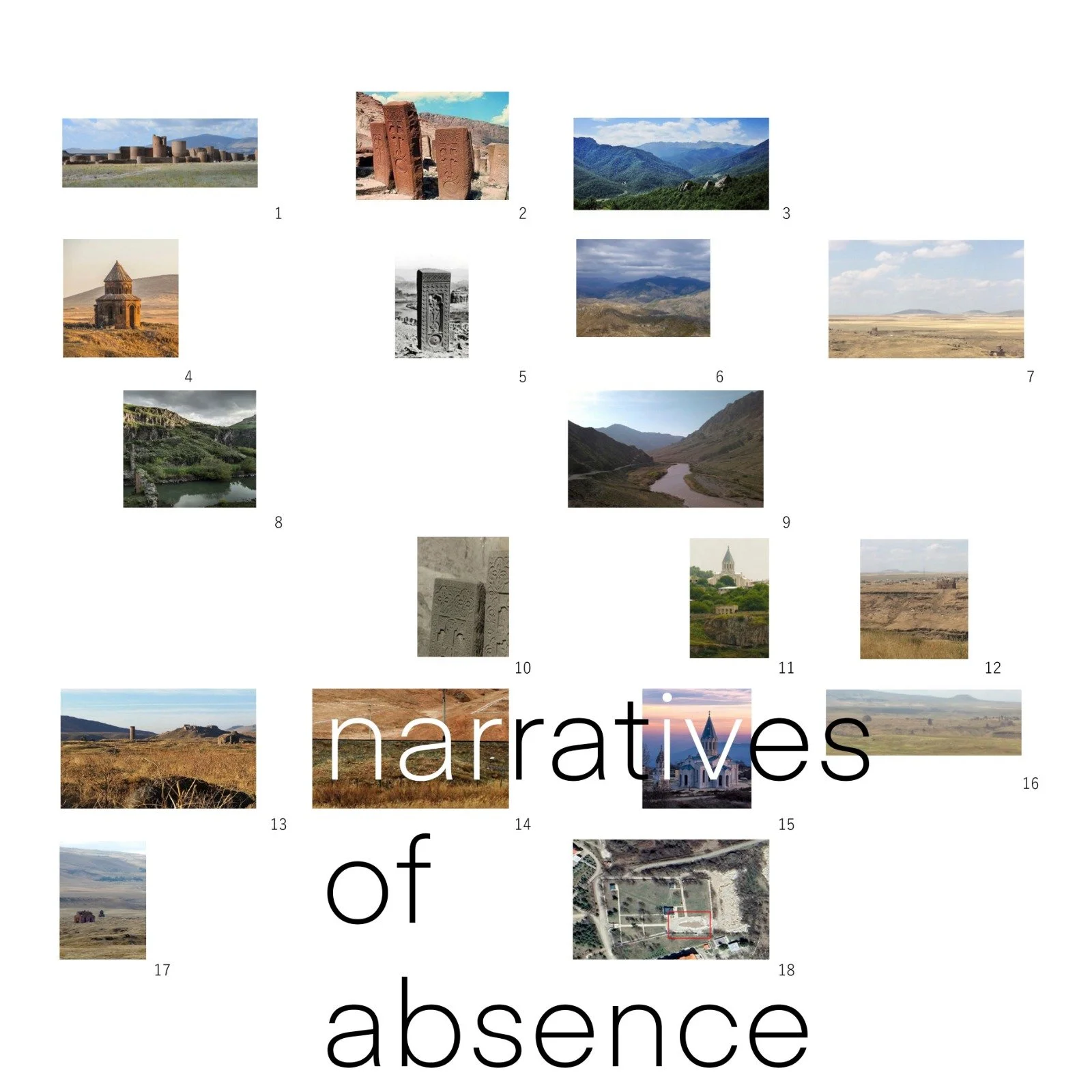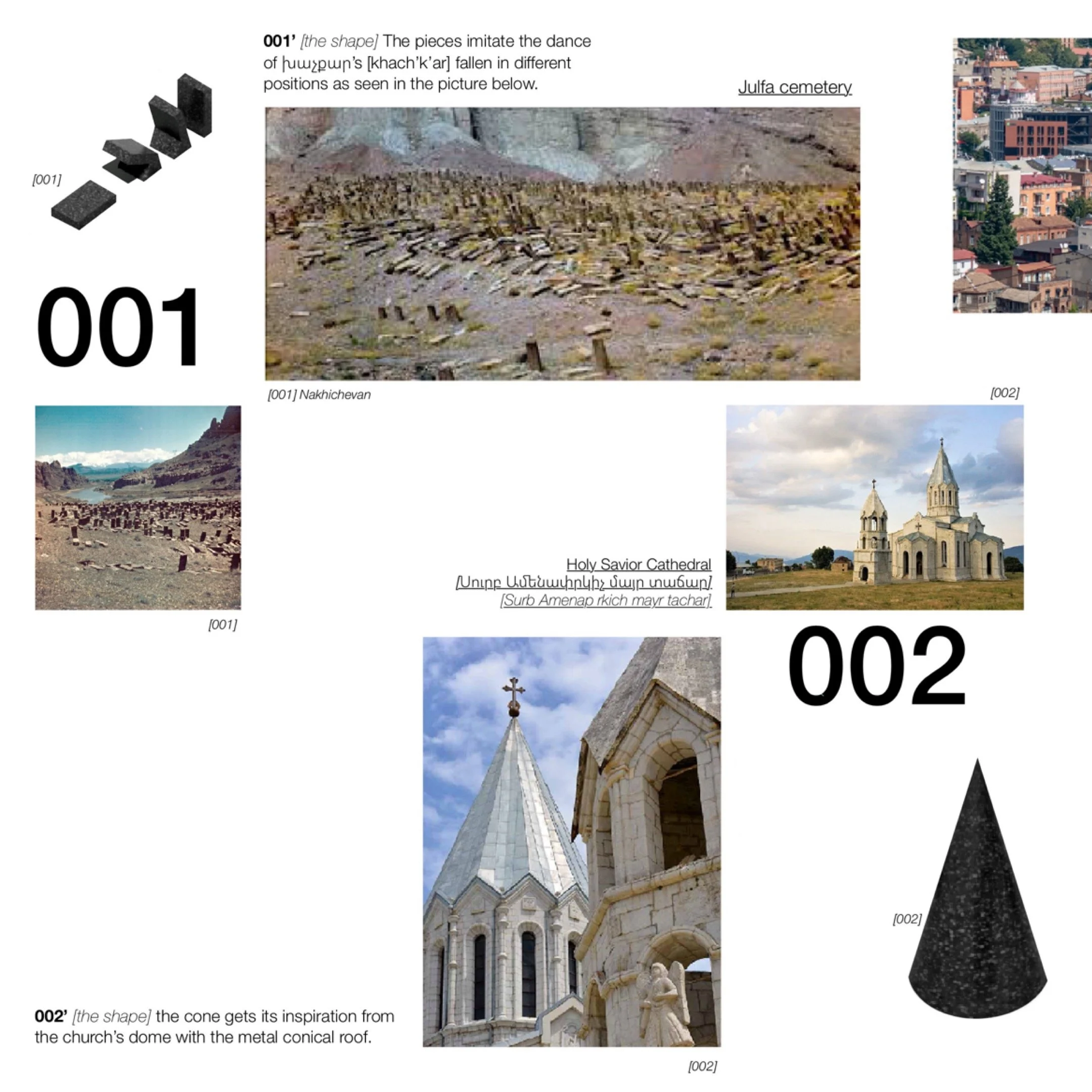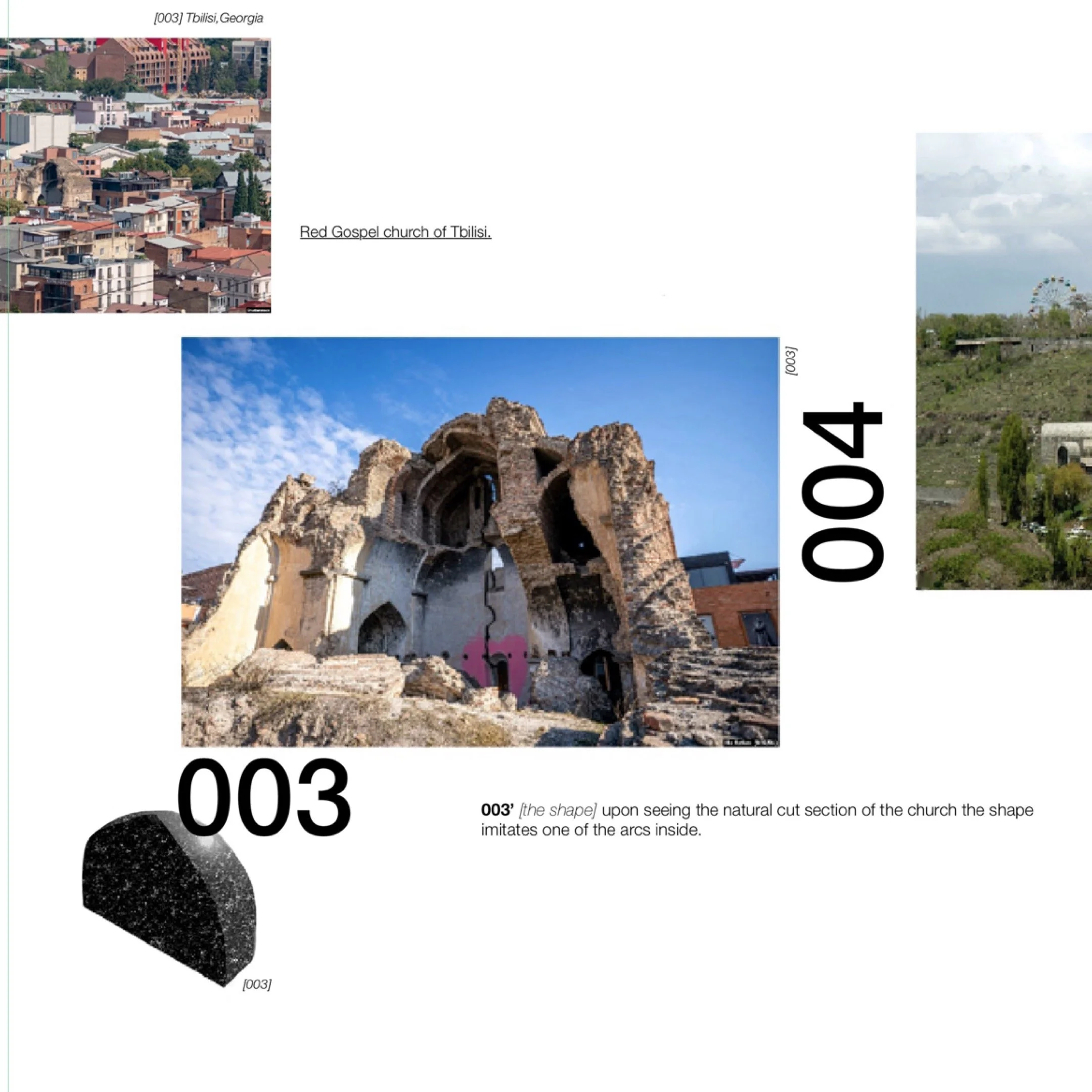
Project
Date
Status
Material
Function
-
Team
-
-
-
NARRATIVES OF ABSENCE
2025
Design proposal
Tuff Stone
Pavilion for Armenia’s National Pavilion
for the Venice Architecture Biennale
Tina Chakarian (curator)
Etienne Bastormagi
Sarine Vosgueritchian
Studio Triniti
-
The team’s approach views the Armenian Pavilion as a threefold act:
1)- that of preserving memory,
2)- preserving the craft of making,
3)- preserving by imagining new realities for these void spaces through dialogue and collaboration.
Here in this slide we see a series of landscapes of chosen sites (we chose 5 sites to put forward as samples)
-
these sites being examples and once carried, and arguably still carry, the DNA of Armenian architecture.
The selected sites are scattered across the Caucasus region, and have been marked by the erasure of their material architecture.The conditions of the erasure might vary whether natural erosion, or disasters, or demolition or deliberate erasure of cultural identity, that led these places to have suffered a physical loss.
Yet, these places remain distinctly Armenian in memory and meaning. Once centers of gathering, community building, and daily life, they have taken on new significance and meaning precisely because of their absence.
To name a few:
Nakhichevani Julfa
Shushi’s Ghazanchetsots
Ani
The Youth Palace
Red Gospel Church of Tbilisi
What is there to be preserved, what authority do we have on the preservation. And how can one imagine a future for these sites that once carried this DNA.
Can we imagine new realities that inform us of the previous occupants as well as the current users.
-
We here ask a series of questions that we deem important for them to be raised today with ongoing challenges and changes in Armenia.
Is Architectural Heritage a personal preservation initiative or a national collective effort ?
How much do we have control on our heritage ? And by control we mean some that no longer fall under the jurisdiction or geography of Armenia today but yet we see vandalized, lost or neglected.
What is the value of the material history of architecture in a planet that continues to degrade through natural and human forces.
What is the impact of misinformation in the age of Artificial Intelligence? And how is the widespread availability of data becoming a double-edged sword—
on one side, enabling access to knowledge, and on the other, how does it distort realities.
-
The pavilion takes the stance looking at Architecture, as a vessel for culture and identity, putting it at the heart of this inquiry.
The exhibit addresses these questions while celebrating Armenian craftsmanship, particularly stone carving techniques, and invites visitors to engage in dialogue around the preservation of architectural heritage.
The exhibit is divided into three parts:
1)- informative
2)- engaging
3)- inviting









